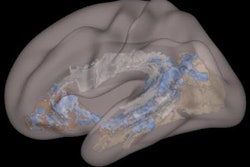
Sunday, December 1 | 12:05 p.m.-12:15 p.m. | SSA22-09 | Room E353A
Should clinicians proceed with an MRI scan if a patient refuses to remove a metal piercing? Researchers from the University of Rochester put that question to the test. They found that the answer depends on the accessory.The study, led by Edmund Kwok, PhD, an associate professor in the department of imaging sciences, was conducted on a 3-tesla MRI scanner using circular metal loops with diameters of 5 cm, 8 cm, and 11 cm; the loops had gaps of 0 mm, 0.3 mm, or 2.5 mm for each diameter. The metal loops were placed one at a time horizontally in a container with the loop touching the skin of a pig knuckle specimen. The objects were then set atop a 27-cm spherical phantom and scanned using a fast spin-echo sequence for 10 minutes and 33 seconds.
Kwok and colleagues detected temperature increases of 1.4° C and 1.8° C in the 8-cm loops with gaps of 0.3 mm and 2.5 mm, respectively, and increases of 5° C and 5.2° C in the 11-cm loops with gaps of 0.3 mm and 2.5 mm, respectively. There was no additional heating in the metal loops with no gap and in the 5-cm loops with a gap.
So, might patients face a health risk if they keep their metal piercings in place? It depends on the size and configuration of the adornments, the researchers concluded. While the radiofrequency (RF) heating risk increases with the size of the conducting loops and the gap between the metal, it "does not imply MRI safety for piercings smaller than a certain size or without a gap, since RF heating depends also on other factors and settings not covered in this study," they wrote in their abstract.
This paper received a Roadie 2019 award for the most popular abstract by page views in this Road to RSNA section.


.fFmgij6Hin.png?auto=compress%2Cformat&fit=crop&h=100&q=70&w=100)





.fFmgij6Hin.png?auto=compress%2Cformat&fit=crop&h=167&q=70&w=250)











